DIY lotion bar recipes are useful as a replacement for store-bought liquid lotion. They store and travel well and safely protect your skin with natural oils and beeswax, sealing in moisture.
In winter spend a lot of time sitting at my desk, resting on my elbows while I type or research. My elbows get rough and dry. Sometimes so dry that they hurt. My husband gets dry heels from working outside on our 140 acres, thinning trees and feeding livestock in 4 feet deep snow or mud. When we have dry, cracked heels or rough painful elbows the salves and ointments I make just aren’t enough. That dry, inflamed skin needs something a little richer to actually go deep into the skin and support the body to heal itself. That’s where lotion bars excel.
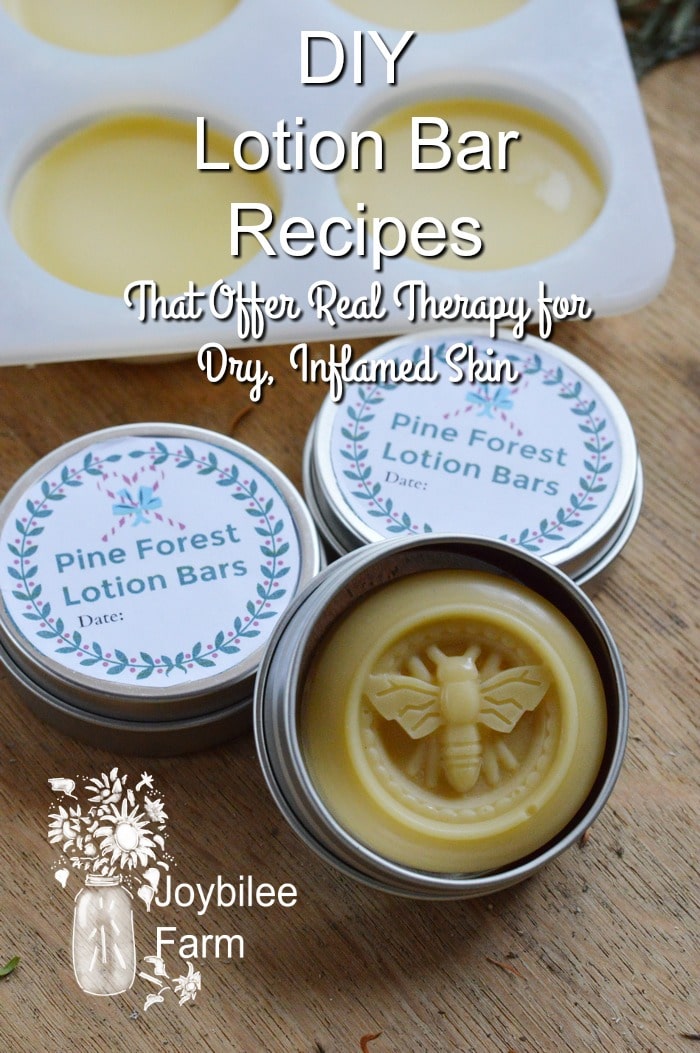
Lotion bars are different than regular lotion. The store-bought lotion contains a lot of water. Sometimes store-bought lotions are 60% water and only 40% of the rich oils that you need to keep your skin moist and supple. That excess water can actually cause your skin to lose moisture. While a store-bought lotion might feel soothing initially, 30 minutes later your skin will be drier than before you put it on. That creates a cycle that keeps you applying more and more lotion to get relief. It’s good for the lotion manufacturer, not so good for your skin.
Lotion bars, on the other hand, are 100% rich, therapeutic oils and beeswax. They are solid at room temperature. These bars are created to protect your hands and feet and to soften dry, calloused skin. They go deep into the skin protecting from moisture loss and healing cracks and fissures.
Lotion bars are made of equal parts of liquid oils, beeswax, and botanical butter like cocoa butter or shea butter, which are both naturally occurring butter.
There is other botanical oils/butter available like mango butter and avocado butter. These, however, are made by hydrogenating the liquid oils into a margarine-like consistency through a chemical process. If you are looking for a natural alternative to commercial lotions and moisturizers you’ll want to stick to shea butter or cocoa butter in your lotion bar recipes.
Making Substitutions to Lotion Bar and Body Butter Recipes
This article has the guidelines to follow when you find a lotion bar recipe that you love, but you’re missing one of the ingredients. It’s important to remember that each ingredient has a specific role in the recipe and you need to understand that role before you try to substitute one ingredient for another.
Get details about substituting carrier oil and liquid oils, substituting natural butter (which are solid at room temperature), and substituting beeswax. Plus, there is a handy download for your recipe book so you will have all the information in one place.
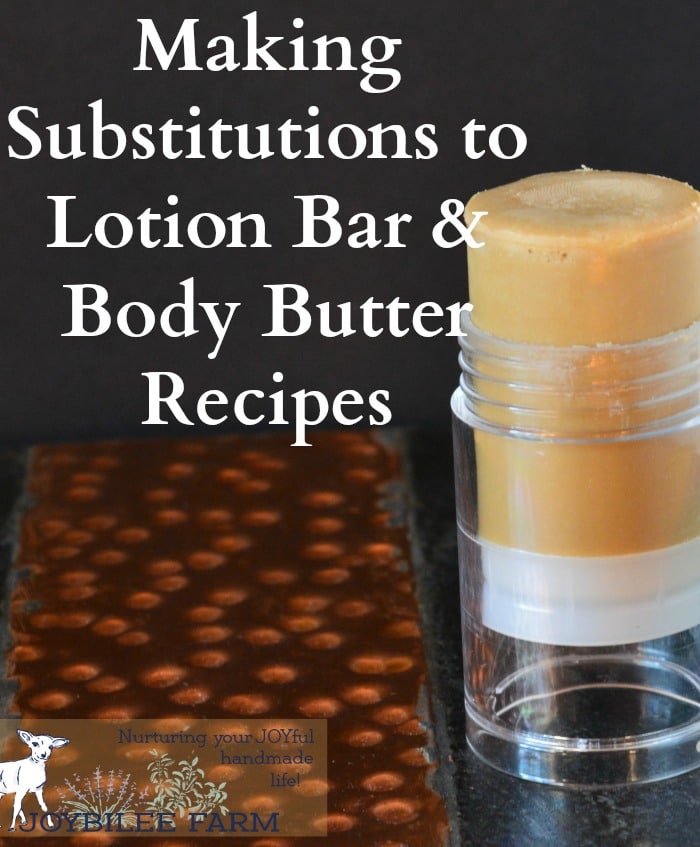
How to Make a Double Boiler
Herbal remedies, lotion bars, and salves all require that you melt several oils and beeswax as part of the directions. You can purchase a separate double boiler that is just used for DIY herbal recipes, but there is an even easier way. Just make this simple double boiler from items you already have in your kitchen.
There is less clean up when you do it yourself, and this method gets rid of another unnecessary item that clutters your kitchen cupboards.
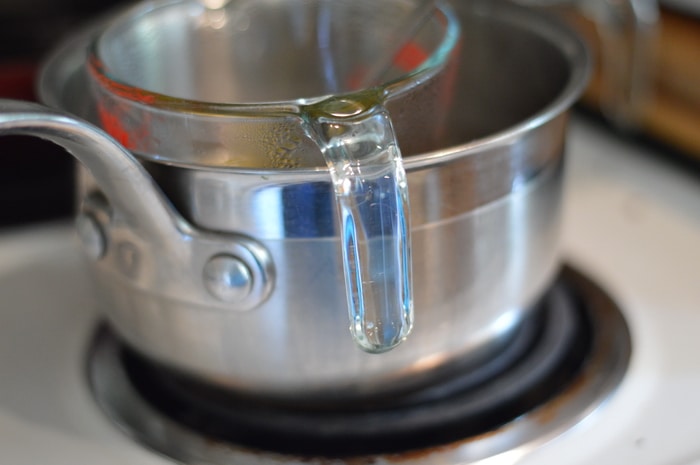
DIY Pine Forest Lotion Bar Recipe
This Pine Forest Lotion Bar recipe helps with dry winter skin, chapped hands, flaky elbows, and knees. You can make the bars herbally richer by infusing the Extra Virgin Olive Oil with pine, fir, cedar, or spruce needles before you make this lotion bar. But if you are in a hurry, or you need a last-minute gift, just proceed with the recipe as it is.
Pine, fir, spruce, and cedar can be used interchangeably for most skincare applications, although they also have their own specific qualities that you should learn about.
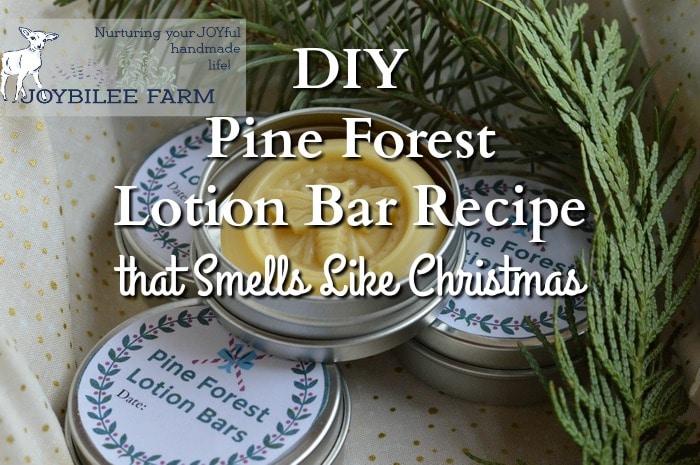
DIY Lavender Infused Lotion Bar Recipe
Summer brings with it another set of skincare needs. We’re no longer dealing with dry, wind-chapped skin. Summer skin is dry from the heat, or from air-conditioned air.
With the hard work of summer comes the additional need for softening callouses from garden work or lots of walking. Lotion bars offer a protective covering that seals the herbs and botanical oils on your skin for longer lasting absorption.
Lavender is one of the best herbs for dry itching skin. It is known for its anti-inflammatory, anti-microbial, and anti-fungal properties. Use lavender for soothing and calming to the nerves, relieving pain, tension, and stress. Some of the best properties to have in a soothing lotion bar.
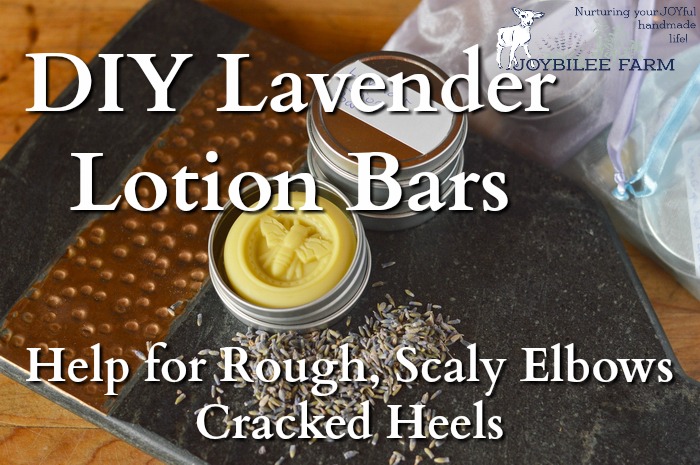
Dandelion Lotion Bars for Sore Muscles and Achy Joints
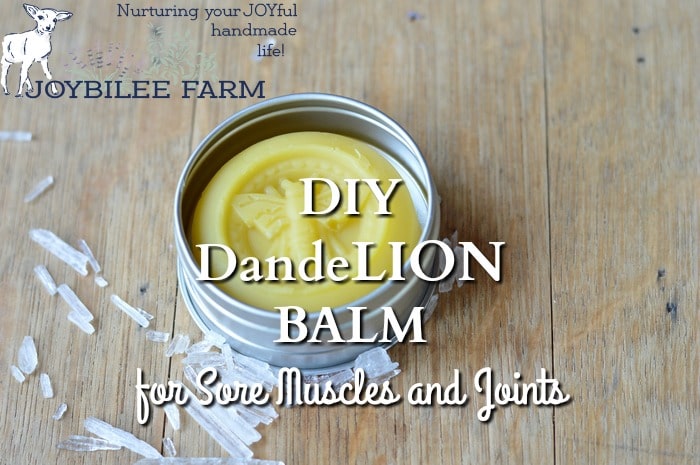
These lotion bars begin with dandelion flower-infused olive oil and include menthol crystals for that cooling “tiger-balm-like” sensation that is both soothing and pain-relieving. Grab the recipe for dandelion lotion bars here.
Invigorating and Moisturizing Peppermint Foot Massage Lotion Bar
Winter dryness can exacerbate dry skin, even to the point of rawness. This moisturizing foot massage lotion bar can give a kind touch for brutally sore, cracked feet, which can be all the kindness a person needs. Count on this lotion bar to invigorate, refresh, and help with fungal issues on tired, sore feet.
Try peppermint food massage lotion bars as a perfect to follow up to a 20 minutes soak in a skin softening Dead Sea Salt bath.
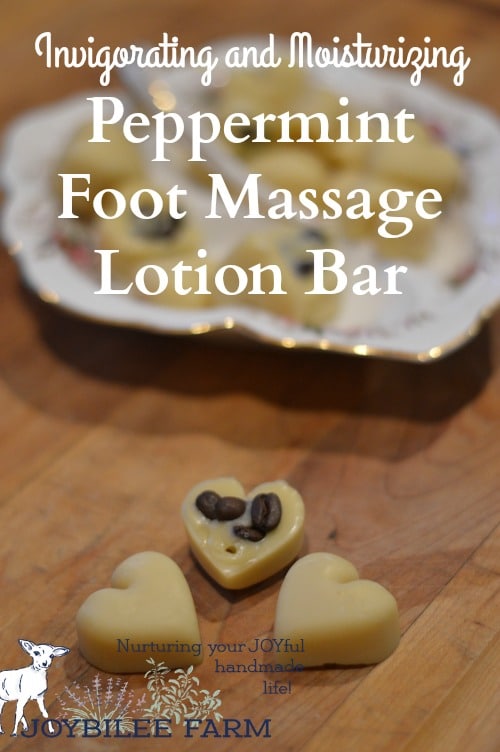
Lotion Bars for an Herbal Massage
Herbal Massage Lotion Bars are useful for winter moisturizing. They are heavier than homemade lotion, so they stay on the skin longer for delivering herbal benefits. In general, if you love the temperate world, lotion bars are made with oils that are solid at room temperature. Herbal Massage Melts are tiny lotion bars packaged in 1 serving sizes, that are just right for a full back massage.
The recipe in this article includes calendula infused oil and cottonwood bud infused oil for a healing touch. Calendula improves lymph flow, is softening and healing to the skin, and supports the body’s natural wellness. Winter harvested cottonwood buds, or “Balm of Gilead” (not the Middle Eastern Balm of Gilead mentioned in the Bible) infused oil relieves pain and inflammation.

Your Turn:
Do you have a favourite DIY lotion bar recipe that you use for skincare? Leave a comment below, I’d love to hear your ideas. Get more great posts on my Pinterest board DIY Herbalism.



Leave a Reply